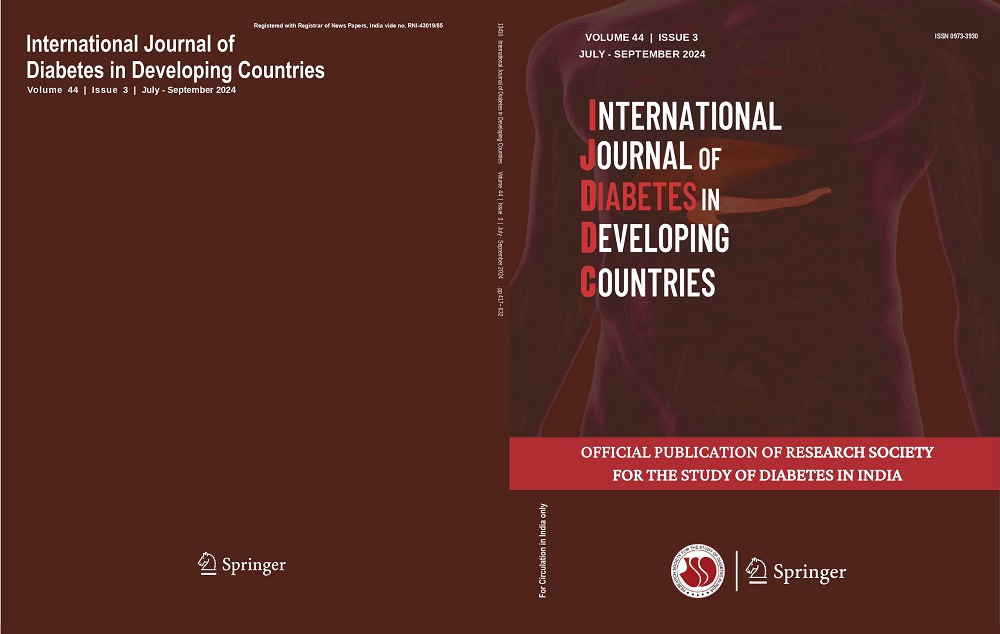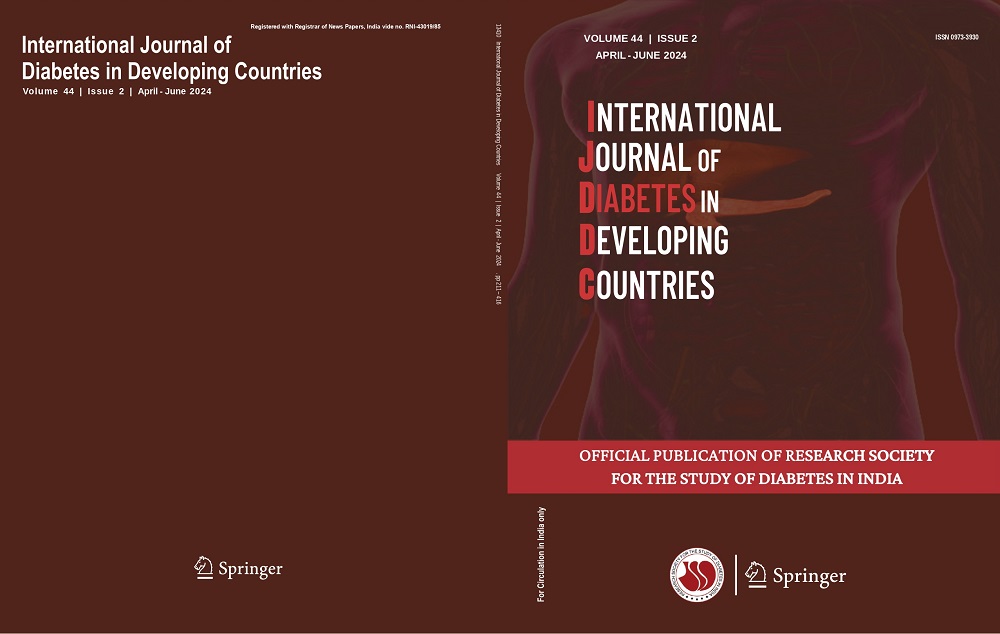Sembagamuthu Sembiah, Jayeeta Burman
Sir,
Diabetes is a significant public health concern in India, with an estimated 77 million adults living with the disease in 2019 1 . Poorly managed diabetes can lead to a range of
health complications, including heart disease, stroke, kidney disease, and nerve damage. Additionally, the economic burden of diabetes is considerable, with the projected cost of diabetes care in India estimated to increase from $31 billion in 2015 to $101 billion by 2030 2 . One of the effective ways to manage diabetes is by adopting a healthy diet, highlighting the need for individuals with diabetes to be mindful of their dietary habits to maintain their blood glucose levels within a normal range.
The diabetic plate method is a simple, evidence-based dietary strategy that can meet the specific needs of individuals with diabetes. This method aids in regulating blood sugar levels and promoting healthy eating habits in people with diabetes. The diabetes plate method has gained widespread adoption and recommendation by healthcare professionals and organizations, including the American Diabetes Association and the International Dia- betes Federation 3 .
The diabetes plate method involves dividing a standard 9-in. plate into three sections: [1] non-starchy vegetables: half of the plate is filled with non-starchy vegetables such as eafy greens, tomatoes, cucumbers, broccoli, and bell peppers [2]. Whole grains: one-quarter of the plate is filled with whole grains such as brown rice, millet, or chapatis made
with whole wheat flour [3]. Lean protein: one-quarter of the plate is filled with lean protein sources such as dals (lentils), chana (chickpeas), rajma (kidney beans), paneer, chicken, or fish. Additionally, a serving of dairy product (dahi) is recommended. 3
The diabetes plate method provides several advantages. Firstly, it offers a simple and easy-to-understand approach to meal planning that can be adapted to local and traditional
foods in India, making it more accessible to people with limited access to nutrition education or resources. Secondly, it provides a visual guide to portion sizes, which can help people with diabetes to manage their blood sugar levels and prevent overeating. Thirdly, the diabetes plate method encourages a balanced intake of macronutrients—protein, carbohydrates, and fats-which can help people with diabetes to maintain a healthy weight, prevent insulin resistance, and manage their blood sugar levels. Finally, the diabetes plate method can be adapted to individual preferences and cultural norms, making it more feasible and sustainable for long-term use.
The inclusion of the diabetes plate method in the dietary guidelines for diabetes management in India can have several public health benefits, including standardized dietary recommendations across the country and consistent, evidence-based dietary advice from healthcare professionals to diabetic patients.
In conclusion, the diabetes plate method is a feasible, effective, and necessary dietary strategy for managing diabetes in India. Its potential impact on public health makes
it crucial for policymakers and healthcare professionals to consider its inclusion in dietary management guidelines for diabetes in India. Given the high prevalence of diabetes in
India, the adoption of this approach can potentially improve the health outcomes of millions of people with diabetes in the country.
Reference
1. Pradeepa R, Mohan V. Epidemiology of type 2 diabetes in India. Indian J Ophthalmol [Internet]. 2021 Nov [cited 2023 Mar 17];69(11):2932–8. Available from: https://www.ncbi.nlm.nih.gov/pmc/articles/PMC8725109/.
2. Yesudian CA, Grepstad M, Visintin E, Ferrario A. The economic burden of diabetes in India: a review of the literature. Glob Health [Internet]. 2014 Dec 2 [cited 2023 May 9];10:80. Available from: https://www.ncbi.nlm.nih.gov/pmc/articles/PMC4279984/.
3. American Diabetes Association. 4. Lifestyle management: standards of medical care in diabetes - 2018. Diabetes Care [Internet]. 2018 Jan 1 [cited 2023 May 9];41(Supplement_1):S38–50. Available from: https:// diabe tesjo urnals. org/ care/ artic le/ 41/ Supplement_1/ S38/ 30025/4- Lifes tyle- Manag ement- Stand ards- of-Medical-Care.




